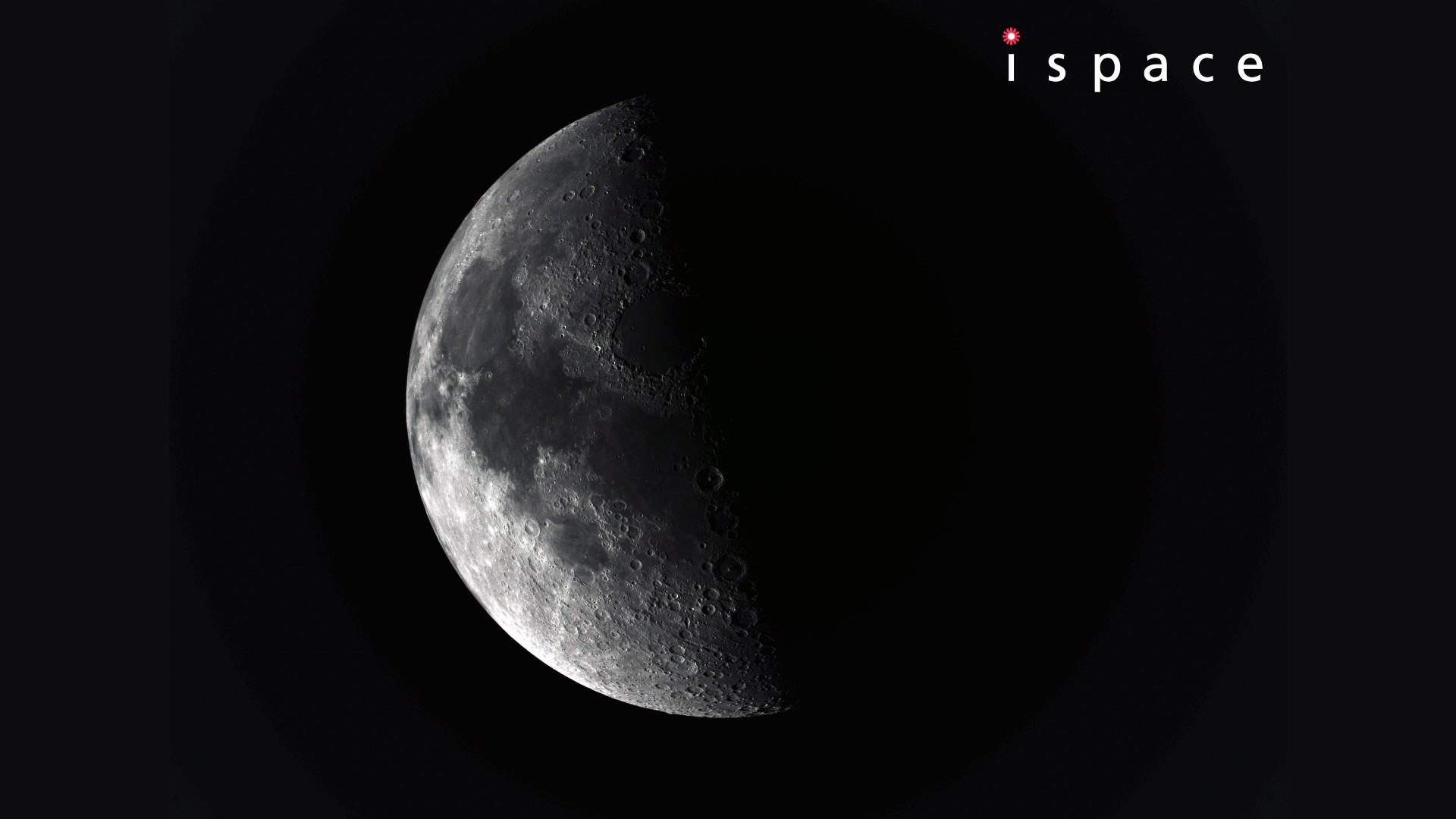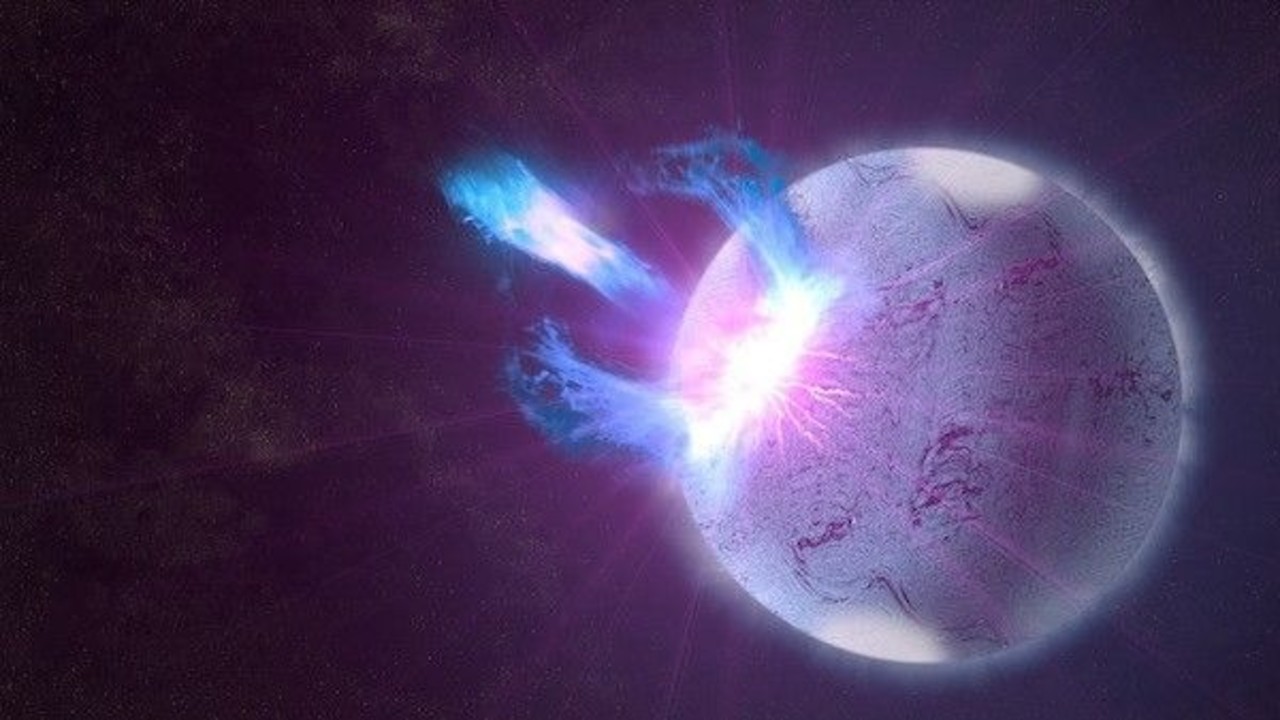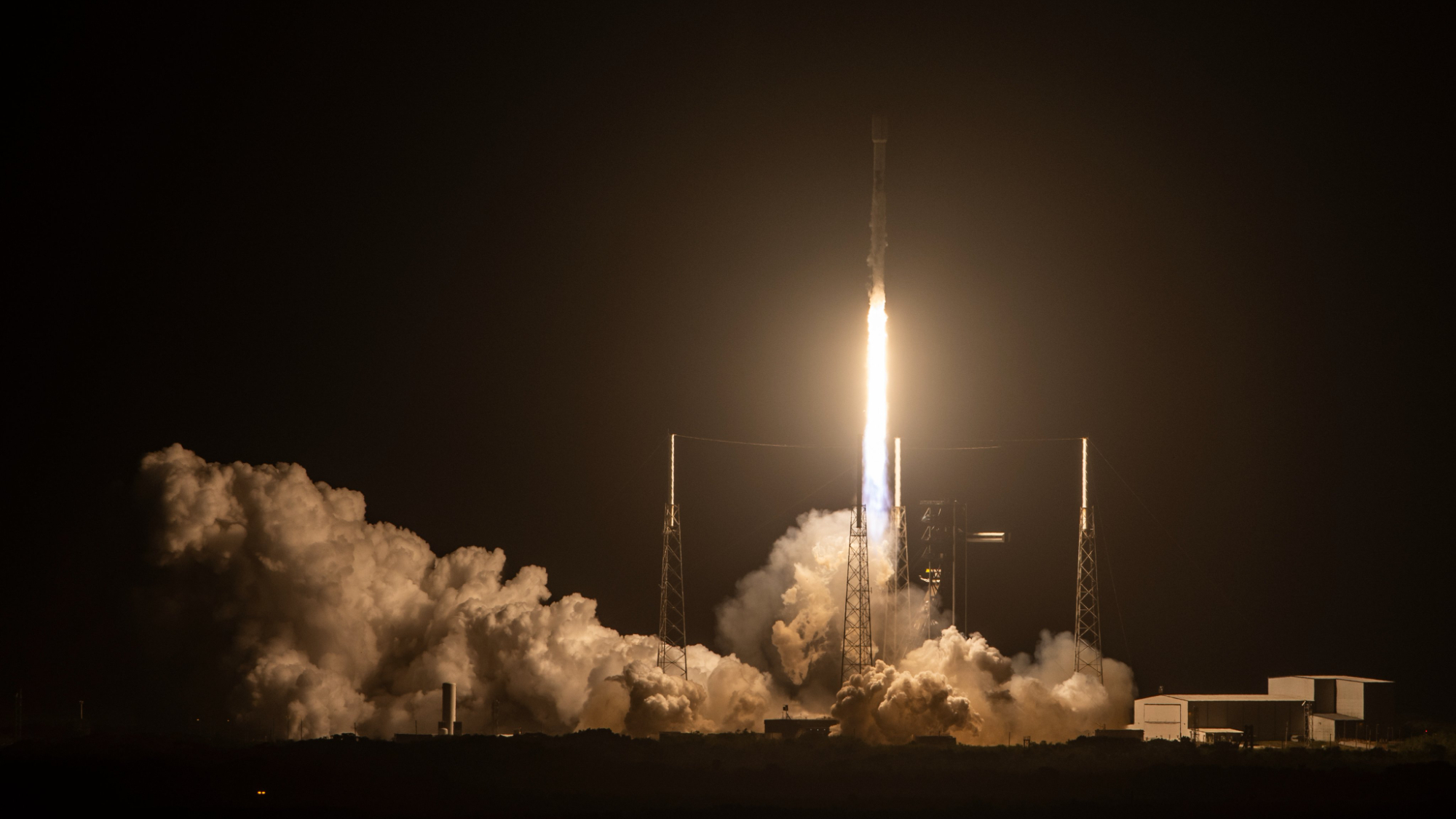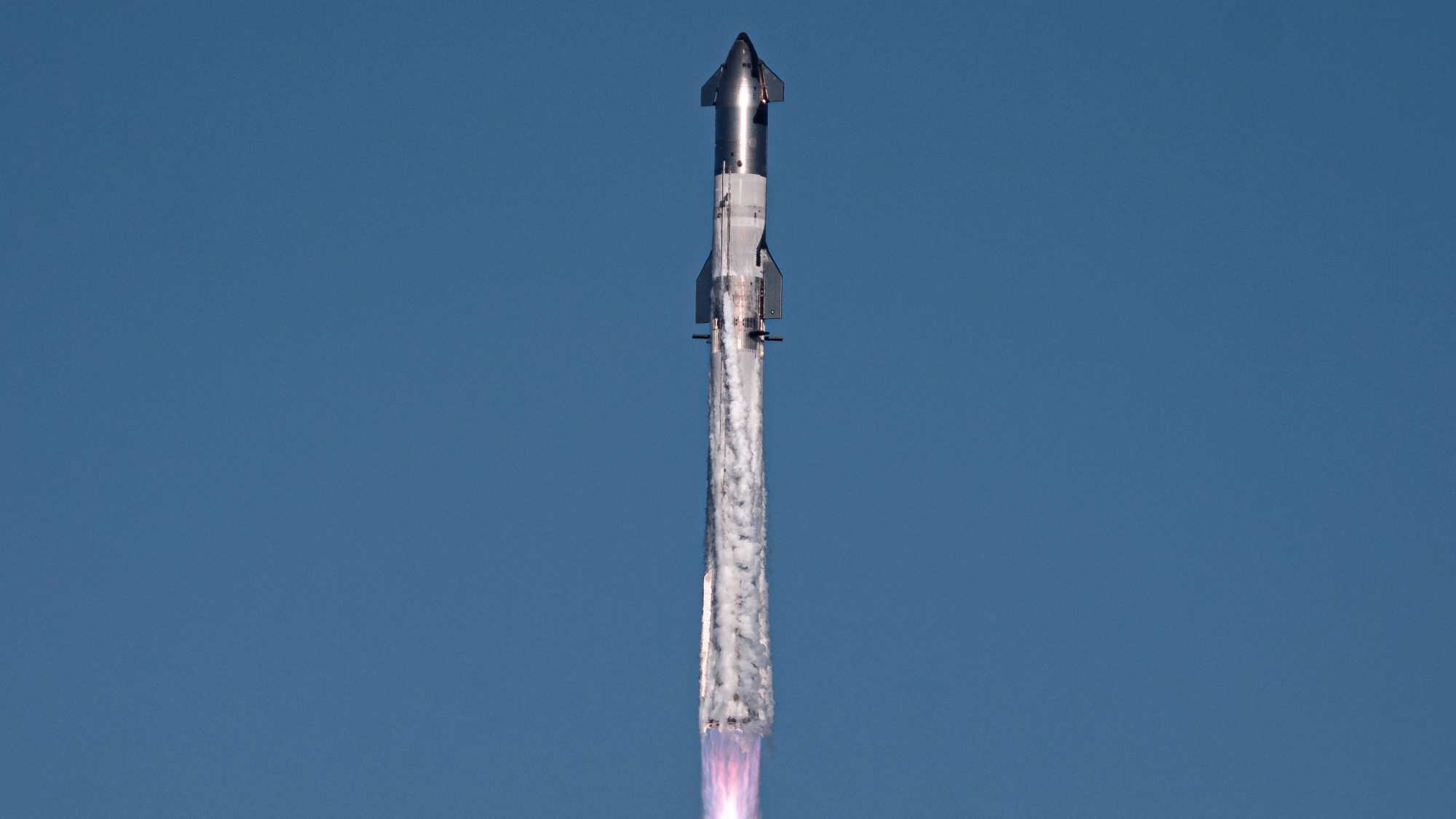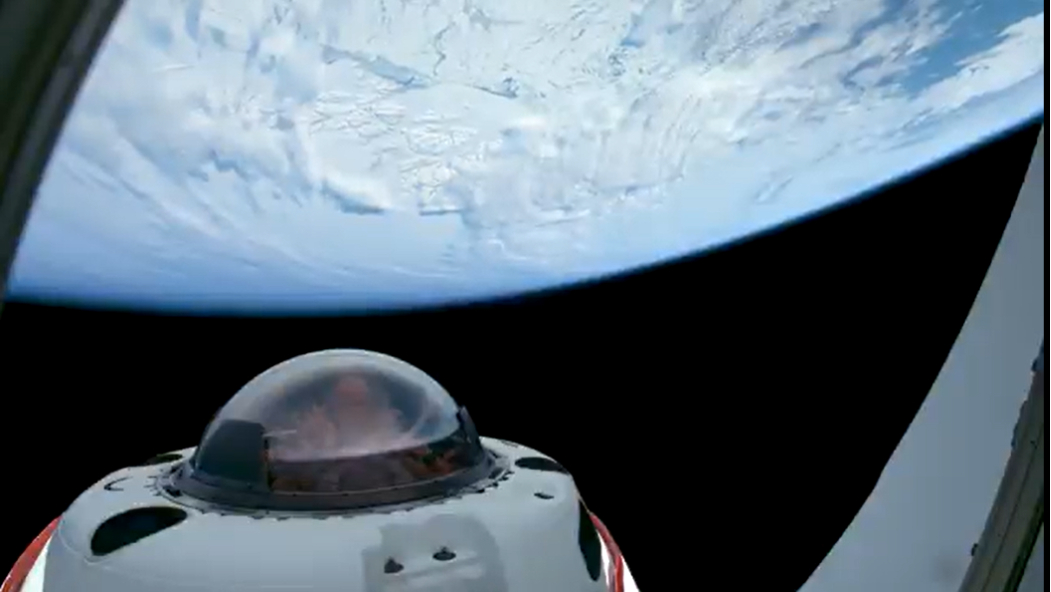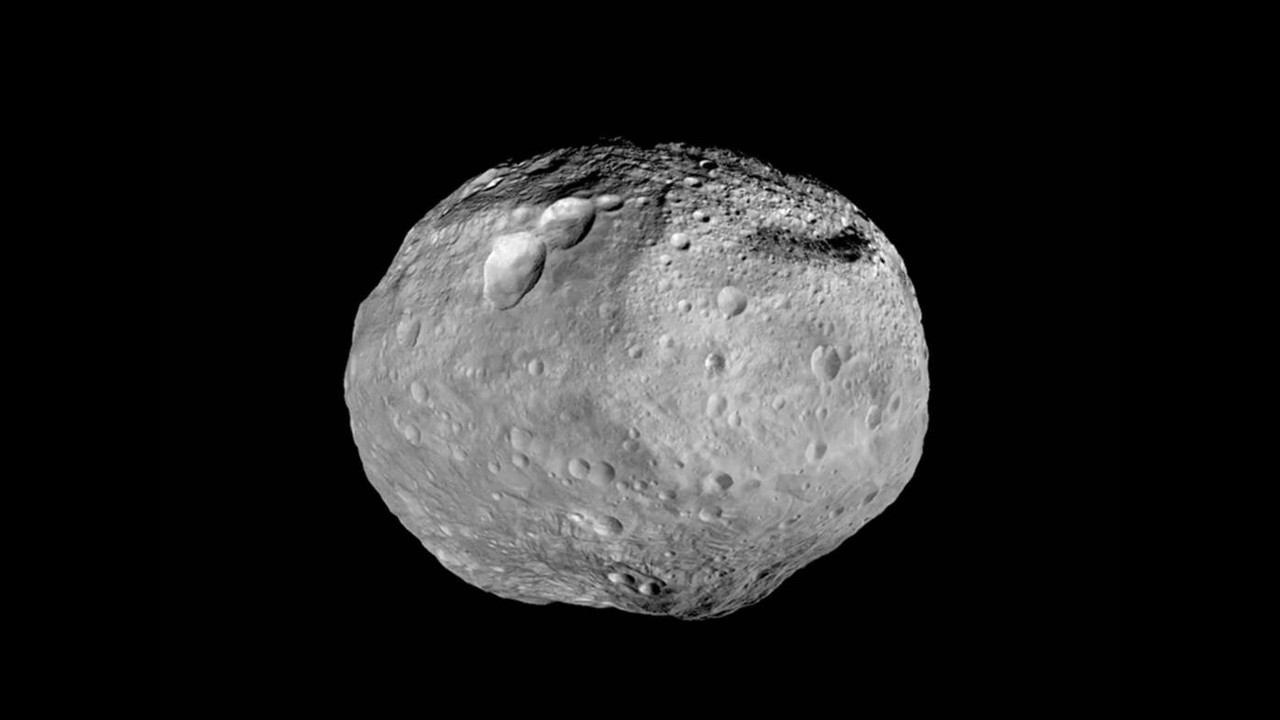Goodnight moon! Astronomers snap photo of Earth's departing mini-moon
Astronomers used the Two-meter Twin Telescope to catch a "see-you-soon" image of the departing asteroid 2024 PT5.
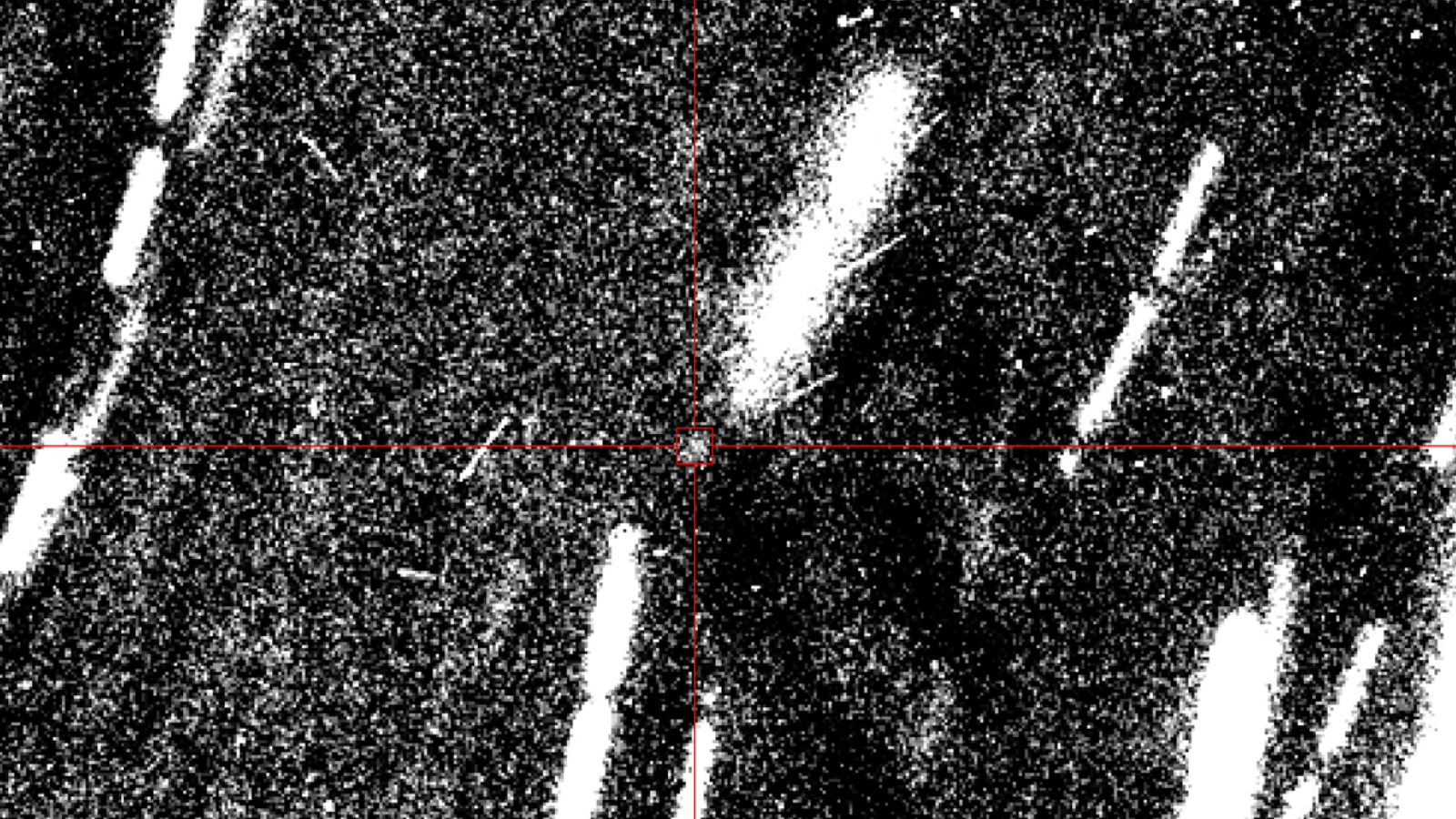
A temporary mini-moon snared by Earth's gravity for nearly two months before departing back into the solar system can be seen in a new image from the Two-Meter Twin Telescope in Spain.
The near-Earth asteroid (NEO) 2024 PT5 was snared by the gravitational influence of our planet on Sept. 29, 2024. From the start of its occupancy, scientists studying this "second moon," including Carlos de la Fuente Marcos of the Universidad Complutense de Madrid, were aware that this would be a "temporary capture" lasting no longer than a few weeks.
That prediction came to fruition on Monday (Nov. 25) when 2024 PT5 departed Earth to return to its usual home in the Arjuna asteroid belt. This secondary asteroid belt circles the sun in an orbit close to that of Earth at an average distance of about 93 million miles (150 million kilometers) from the solar system's central star.
With a width of just 37 feet, equivalent to the height of five stacked Christmas Trees (artificial ones, at least), 2024 PT5 wasn't clear to the vast majority of skywatchers.
Marcos and his colleagues have been studying it with the Two-meter Twin Telescope (TTT), which is operated by the Instituto de Astrofísica de Canarias (IAC) and is located in Santa Cruz de Tenerife, Spain. This allowed the team to make a number of discoveries about the asteroid, including the fact that its composition indicates it could be a piece of the moon blasted away by an asteroid impact.
The astronomers' eyes weren't too filled with tears over the departure of 2024 PT5 and the end of its spell as Earth's second moon to stop them from imaging it as it moved away.
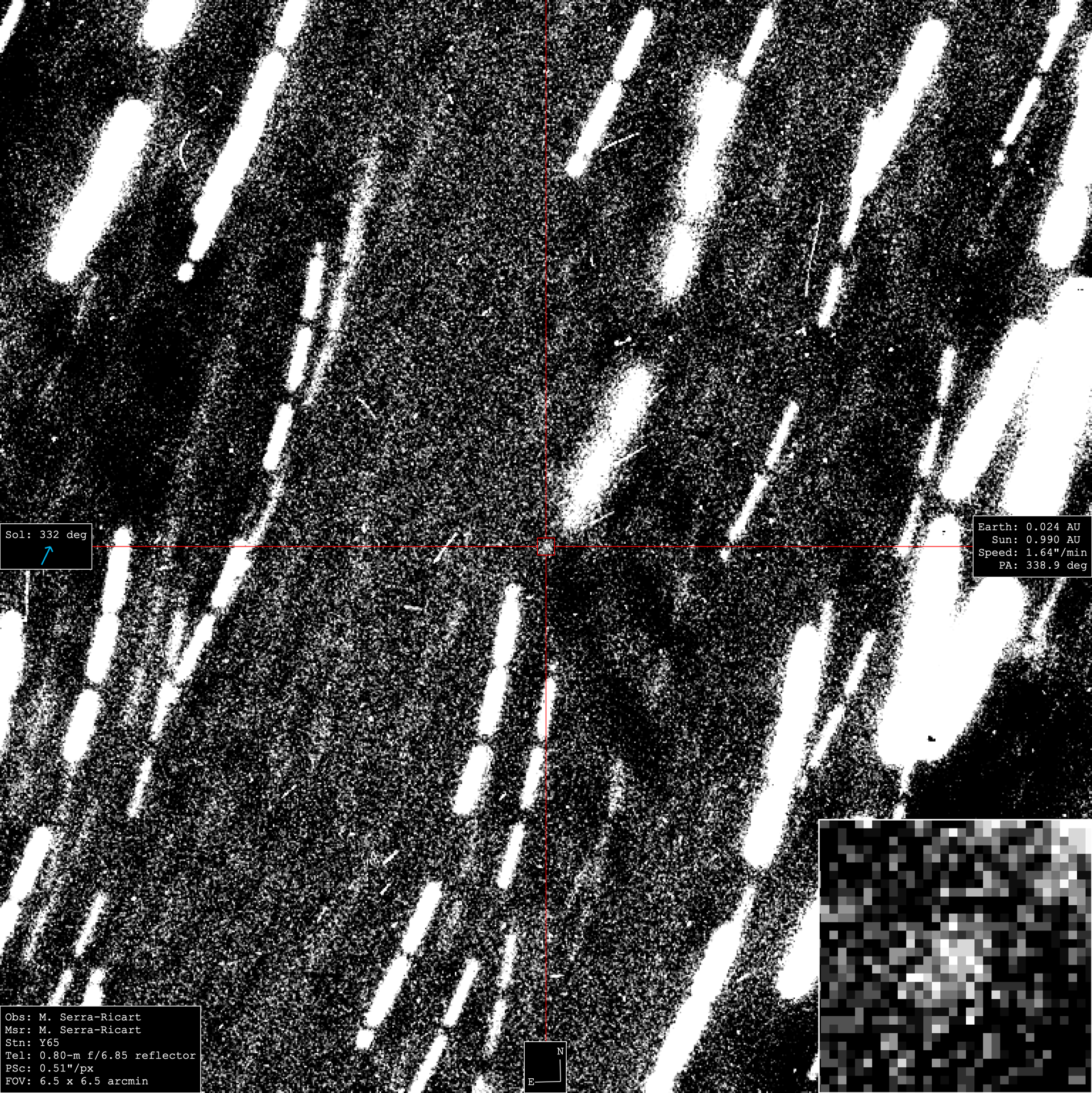
"The 'see-you-soon' picture of 2024 PT5 was acquired on Monday by Dr. Miquel Serra-Ricart, a member of our collaboration," Marcos told Space.com via email. "The observation came from the TTT."
Get the Space.com Newsletter
Breaking space news, the latest updates on rocket launches, skywatching events and more!
2024 PT5 won't be staying away from Earth for long. According to the NASA JPL small body lookup database the asteroid will be back on Jan. 9, 2025. At that time it will come even closer to Earth than it did recently, at just 1.1 million miles from Earth. However, traveling at around 2,300 mph (3,700 kph) the asteroid will be moving too fast to be snared by Earth's gravity and serve another stint as our second moon. After that, 2024 will return again in 2055.
"As for the future, it is virtually certain that it will return in 2055. Using the latest data, it will have negative total geocentric energy [needed for gravitational capture to occur] from late on Oct. 6 until early on Oct. 14, 2055," Marcos told Space.com earlier this week. "However, at this time, it will remain at 3.3 million miles [5.3 million km] from Earth. It will not become a temporary satellite of Earth because it will remain beyond 28 million miles [45 million km] from our planet.
"With the previous orbit determination, it would have been captured in 2055; with the newest data, the capture event will not take place."
Join our Space Forums to keep talking space on the latest missions, night sky and more! And if you have a news tip, correction or comment, let us know at: community@space.com.

Robert Lea is a science journalist in the U.K. whose articles have been published in Physics World, New Scientist, Astronomy Magazine, All About Space, Newsweek and ZME Science. He also writes about science communication for Elsevier and the European Journal of Physics. Rob holds a bachelor of science degree in physics and astronomy from the U.K.’s Open University. Follow him on Twitter @sciencef1rst.

